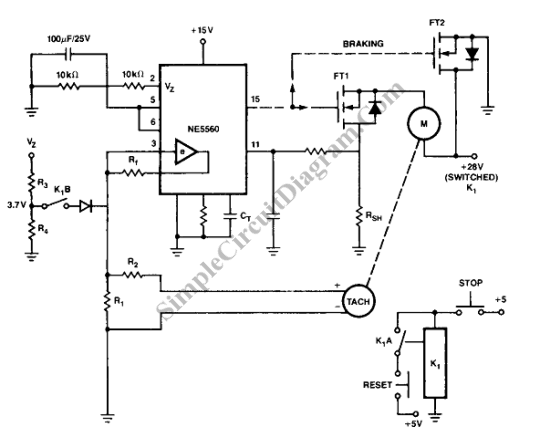Constant Speed PWM Motor Control
To make a constant speed motor control we can use Closed loop (servo) control. Constant speed motor is a motor that has constant speed although the load is change, indeed when the electric supply voltage is also changed. This circuit uses tachometer to sense the actual speed to maintain the speed at a constant value. If the speed is slowing down, the circuit will automatically increase the power transfer to the motor by increasing the duty cycle of the motor drive, until the sensed speed by the tachometer and the reference speed are same.

Motor Control Circuit
We cannot change the direction of motor by the control signal because this circuit is unipolar. As the core of the circuit, this switched mode motor drive (SMMD) uses NE5560, which suitable for small DC motor. A single Philips BUK456-100A Power MOSFET used as the power switching component. It has 100 V voltage rating of VDS, 0.057 Ohms RDS-ON , and current handling capability over 30 A. The nominal frequency of the PWM is 10 KHz. To avoid audible interference to audio equipments we can increase the frequency of the PWM over 20khz.
Torque Limiter
Torque limiter is used to limit the torque. This circuit include a current sense resistor, placed in the source lead to monitor motor drive current on a cycle-by-cycle basis. The value of this resistor is set to give the error amplifier threshold voltage at the desired maximum current.
Motor Start-Up and Dynamic Braking
At power on, a slow start network (Pins 2,5,6) gradually ramps up the duty cycle, which used to avoid power surge. A fixed duty cycle control for braking is produced by Forcing the input of the error amplifier by K1B. The over-current circuit still work during braking. [Circuit schematic diagram source: Power Semiconductor Applications from Philips Semiconductors]